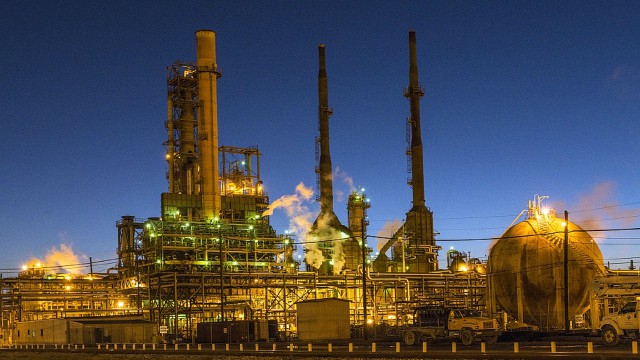Encana Corp. (TSX:ECA)(NYSE:ECA) is down more than 30% in the past three months.
Let’s take a look at the current situation to see if the stock deserves to be in your portfolio.
Oil outlook
Oil prices remain volatile amid speculation of whether or not OPEC’s pact to reduce supplies can drive prices higher.
What’s the scoop?
Last November, OPEC and a handful of other countries, including Russia, agreed to reduce production by 1.8 million barrels per day through June 2017. The deal has since been extended to the first quarter of next year.
Investors initially cheered the move, sending WTI oil above US$55 per barrel, but doubts about the group’s compliance began to take a toll in March, and oil prices have given back all the post-deal gains.
OPEC output actually hit a 2017 high in June on the back of rising production in Libya and Nigeria. The two countries are exempt from the reduction agreement.
In addition, pundits say rising U.S. production is providing a strong headwind to any potential gains that would come from OPEC’s efforts, even if the group hits its reduction targets through the end of 2017. American oil production is up about 10% in the past year.
At the time of writing, WTI oil trades at US$44 per barrel, which isn’t far off the 2017 low.
What about Encana?
Investors either love this stock or they hate it.
Why?
Encana continues to work through its transition from natural gas to oil. Critics of the company say the initial decision to make the move was ill-timed, as Encana spent billions on large oil acquisitions just before oil prices began to tumble.
Through the downturn, Encana has dumped natural gas assets to shore up the balance sheet, and the process continues. The latest deal was announced in June for gas properties located in Colorado.
Fans of the stock say management has done a good job of finding buyers in a difficult market and believe the oil assets will eventually deliver as expected.
Should you buy?
The oil portfolio is strong, and Encana definitely offers attractive upside potential, as investors saw with the rally from $4 per share in early 2016 to $18 in late January this year.
At the time of writing, the stock is trading at $11 per share, so buying here really depends on where you think the oil market is headed.
If you are convinced oil is going higher in the coming months, it might be worthwhile to start nibbling. Otherwise, investors should probably stay on the sidelines and wait for the downturn to run its course.
I’m not convinced oil has hit its bottom for 2017, so I would look for other opportunities today.







